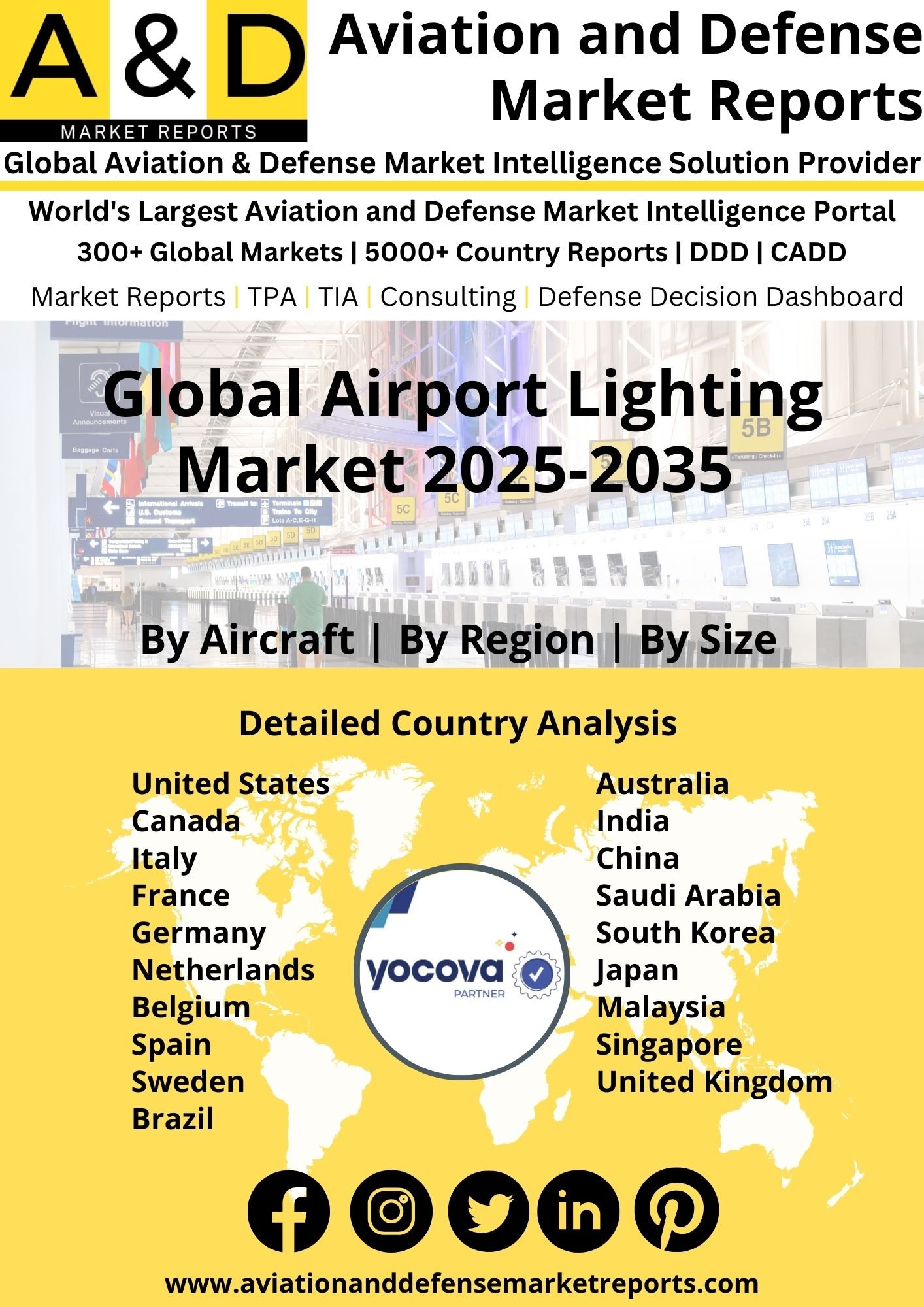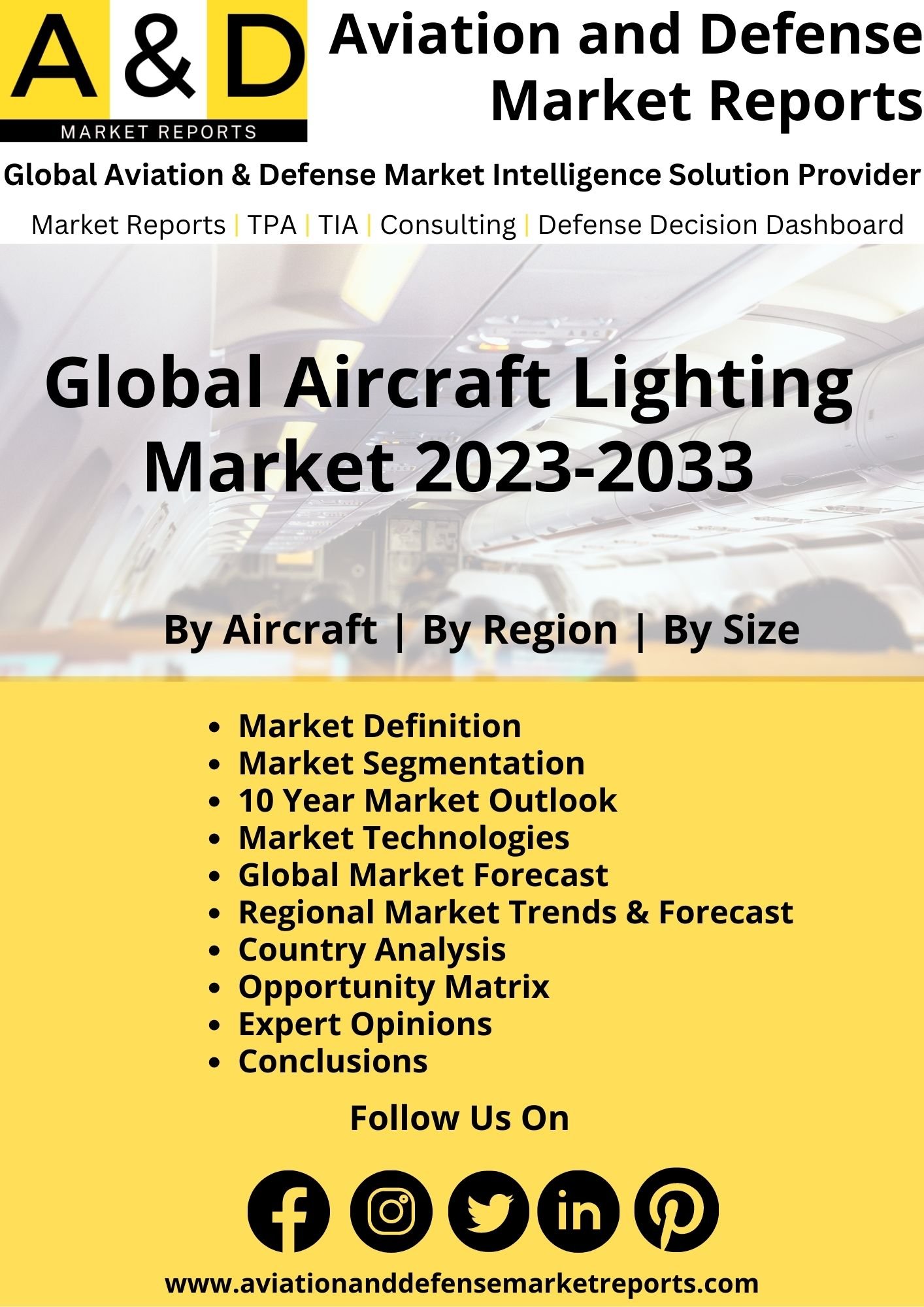Description
Aircraft Lighting Market
Frequently Asked Questions of Aircraft Lighting Market
The lighting system that is integrated outside or inside of an aircraft to provide illumination is called an aircraft lighting system. Aircraft lighting market can be divided into two main categories they are, exterior lighting systems and interior lighting systems. The interior lighting system is the lighting system that is integrated inside the aircraft body, cockpit, and fuselage. These lightings provide illumination to passengers, pilots, and cabin crew. Wall lights, leading lights, cockpit lights, floor lights, fuselage lights, signage lights, and lavatory lights are considered the interior lighting system. Similarly, aircraft visibility lighting, specific purpose lighting, navigation lighting, pilot visibility lighting, and exterior emergency lighting are considered the exterior lighting system. To improve visibility and avoiding a collision is the primary function of the exterior lighting. Factors such as aviation industry revival and increase in air traffic enhance the growth of aircraft lighting systems. Aircraft lighting market size is considered a critical part of the framework of aviation. It provides the operation of the aircraft with visibility, accurate navigation, and protection. Various technology-based advancements are carried out to boost the performance of lighting systems.
Major factors driving Aircraft Lighting Market Growth
Several Aircraft lighting market growth drivers are there for commercial aircraft lighting. There is a lot of demand for non-electronic path lighting. The next-gen technology is non-electrical lights that are luminescent light strips. These lights are highly supported during light system failure and other unanticipated incidents. On pathways, an emergency exists, and cabin non-electrical light strips can be installed. There is a lot of demand for LED aircraft lights due to the rising passenger traffic. Nowadays, many aircraft are implementing cabin modernization. The cabin modernization uses LED lights as a safe lighting system and illumination source. The light in the cabin not only provides light to the passengers but also alert them if there is any emergency. Because of the above-mentioned drivers, the Aircraft lighting market analysis will experience high demand in the future years.
Trends influencing the Aircraft Lighting Market Size
It is expected that the interior light segment will dominate the Aircraft lighting market report. Due to the modernization programs of many aircraft operators, especially commercial airlines, the demand for new-generation interior lights in aircraft is anticipated to grow. The new generation aircraft adopted LED ambient lighting technologies largely, this triggered cabin retrofitting in older aircraft to maintain homogeneous service for the entire fleet. To enhance the passenger experience, aircraft OEMs and airlines are modernizing the cabins. A new Airbus cabin was operated by Lufthansa in its first Airbus 321neo. There is a significant change in the lighting scheme in the new cabin design. The entrance area and cabin design are extensively redesigned to appear friendlier and brighter. A specially programmed lighting system, human-centric lighting, illuminates the cabin from warm red to colder blue light. The light in the aircraft cabin can be changed with respect to day or night. To improve the experience of the passengers, airlines are expected to invest more in aircraft lighting systems in the forthcoming years. The airline focuses on passenger safety along with the flight experience, which is expected to the Aircraft lighting market growth in the following years.
Aircraft Lighting Market Forecast & Dynamics
The population in the urban areas is increasing at an exponential rate in many regions. Since the population is more, there is pressure for effective transport facilities. Since the population is larger, the transportation system should find a way to accommodate this larger population. For the prevalent passenger traffic, urban air mobility is a perfect solution. To regulate passenger traffic urban air mobility such as eVTOL drones are used. There is a rise in aircraft lighting systems due to the increase in urban air mobility. In the aviation industry, products are supplied by aircraft lighting manufacturers. During the assembly process, the aviation industry uses the lights. However, the aircraft manufacturing cycle is long. The duration for assembling and completing the aircraft is very high. The model aircraft lighting system is analyzed and tested before it reaches the buyer. The aircraft delivery time is the restraint in the market. Thus, this factor delays the profit of the market.
Aircraft Lighting Market Analysis for Recent Developments
STG announced plans to unveil a platform-agnostic universal lighting product, which segments the lighting system. It is observed that each segment can behave independently in terms of color transition and intensity, which enables the operator to have multiple dynamic lighting scenarios and profiles. Collins Aerospace unveiled Lilac-UV, a UV lighting solution that sanitizes aircraft interiors. The new system without any chemicals can disinfect airplane interiors very quickly.
The global landscape of aircraft lighting has witnessed significant advancements, enhancing safety, aesthetics, and efficiency in aviation. Aircraft lighting systems play a crucial role in providing illumination for various purposes, including navigation, emergency situations, and passenger comfort. Energy-efficient LED technology continues to dominate the aircraft lighting market, offering improved performance, durability, and reduced power consumption compared to traditional lighting sources. LED lighting systems contribute to fuel efficiency and operational cost savings for airlines.
Smart lighting solutions with customizable color options and intensity control have become more prevalent in aircraft interiors. These systems enhance passenger comfort by simulating natural light conditions, minimizing jet lag, and creating a pleasant in-flight environment. In the cockpit, advancements in head-up display (HUD) technology and ambient lighting contribute to improved visibility and reduced pilot fatigue. These features enhance situational awareness and overall flight safety. Global standardization efforts and regulatory compliance ensure that aircraft lighting systems meet safety requirements and operate consistently across different aircraft models. The ongoing evolution of aircraft lighting in 2023 reflects a commitment to advancing technology for safer, more efficient, and passenger-friendly air travel experiences.






